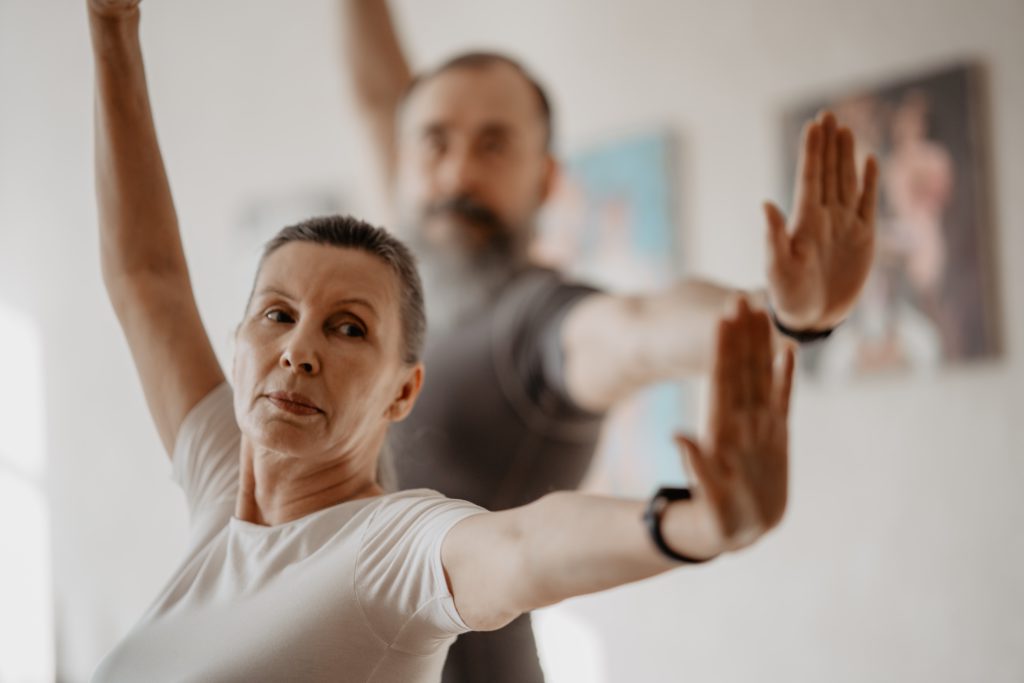Think about what senior living means to you.
Senior living must be important to you, or you wouldn’t be reading this article. The fact that you are reading this shows you’re interested in embracing aging with a purpose! Senior citizens pertains to an exclusive community of 55 years and older.
Joining the Ideal Senior Living Community
Perhaps you are at that stage in your life that you want to downsize your home and you’re looking for a senior living home. Maybe you have been considering moving to a community of like-minded seniors. If you decide you want to move to a senior living community—the best thing you could do is research very carefully and thoroughly.

Don’t just take the word of someone who knows someone at “insert name here” senior community. You have to select one that’s right for you – ideally, one that focuses on health and wellness of the mind, body, and spirit. You need a community that focuses on every aspect of life.
Research doesn’t mean looking through brochures. It means physically visiting, talking to residents, checking out programs and learning about personnel. It also means finding out what medical facilities are nearby and their staffing. Senior living should concentrate on the “living” aspect of your life—wherever you decide to settle.
Senior Living Doesn’t Mean You Stop Living!

Just because you’ve reached that magic number that throws you into the “senior citizen age” category (usually 65, although people over 50 are eligible to enroll in AARP programs), it doesn’t mean your life and activities suddenly come to a screeching halt. Senior living is what you, personally, make it. Continue with those activities and even expand upon them. As long as you’re physically able to, there’s no reason to stop what you’ve been doing. Retirement age doesn’t necessarily mean you have to completely retire. More and more seniors are continuing to work well into their 60’s, 70’s and even 80’s. Many, after they retire from their current jobs, take up a whole new profession. It’s up to you.
Senior Leisure Should Include Exercise
Many senior citizens participate in walking clubs that meet at local malls and gyms. Indoor fitness centers offer plenty of opportunities for seniors to work out at their own level. Some tips if you’re hesitant about using a public gym: get a more realistic image of what gyms are really like. Members come in all shapes and sizes, and you won’t be the only person in spandex. Everyone is so focused on their reason for being there that no one is going to focus on what you’re doing.
Most people are busy working on their own routine. You might get a few glances as “the new kid” but people quickly go back to their own activities. Another tip is to try going at “off” hours. To help get past the shock of working out in public, go during off-peak hours – late morning and mid-to-late afternoon. The staff will likely be more attentive, and willing to help, at these times. Lastly, bring a buddy for support! There is safety in numbers, so enlist a friend at the same fitness level as yourself to brave the gym with you.

Don’t Be Too Proud to Make Your Life Easier
To continue enjoying activities you love, or even day-to-day activities, be willing to find tools to make these activities easier. Be open minded! Items such as vision-enhancing glasses will help you thread that needle, or put a knot in your fishing line. Easy-to-use household gadgets, like grabbers, help you reach high shelves. Long-handled utensils and gardening tools allow you that little extra step towards your independence. Check out the many online sites that offer a wide variety of products that will make your senior living easier and more productive.
Be Cautious (But, Not Overly Cautious) When Driving
Many seniors get to a point where they curtail their driving; however, there are many things you can do to make your driving experience safer. Night driving, for example, can be challenging for all drivers, but especially seniors. Why? Ninety percent of a driver’s reaction depends on vision, and vision is severely limited at night. Depth perception, color recognition, and peripheral vision are compromised in older drivers. A 50-year-old driver may need twice as much light to see as well as 30-year-old.
To minimize after-dark dangers, the National Safety Council recommends these steps:

- Clean your headlights often and aim them in the proper direction.
- If in doubt, turn your headlights on. Lights will not help you see better in early twilight, but they will make it easier for others to see you. Being seen is as important as seeing.
- Reduce your speed and increase your “following” distances. It is harder to judge other vehicle’s speeds and distances at night.
- When following another vehicle, keep your headlights on low beam.
- If an oncoming vehicle does not lower its beams from high to low, avoid glare by watching the right edge of the road and using it as a steering guide.
- Make frequent stops; don’t drive when fatigued. Night driving isn’t the only challenge for seniors. Sometimes just being in a high-traffic area can make you nervous.
- It’s natural to slow down, but remember that driving below the speed limit creates hazards as well. If you cannot safely maintain the minimum designated speed, you should choose a less-traveled route.
In addition to these tips, you might want to consider attending an AARP 55 Alive Driving Refresher Course. These are offered across the country at various locations. This eight-hour class reviews with you the rules of the road and what you need to be more aware of as an “older driver”. The cost of the class is $10. Several auto insurance companies will give discounts to their clients who participate in one of these classes. Check with your auto insurance company.
Remember—senior living is what you make it, so enjoy it!

